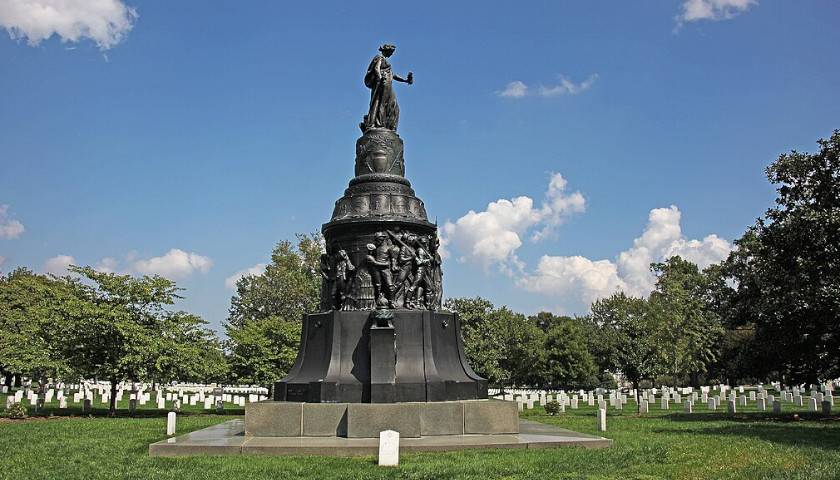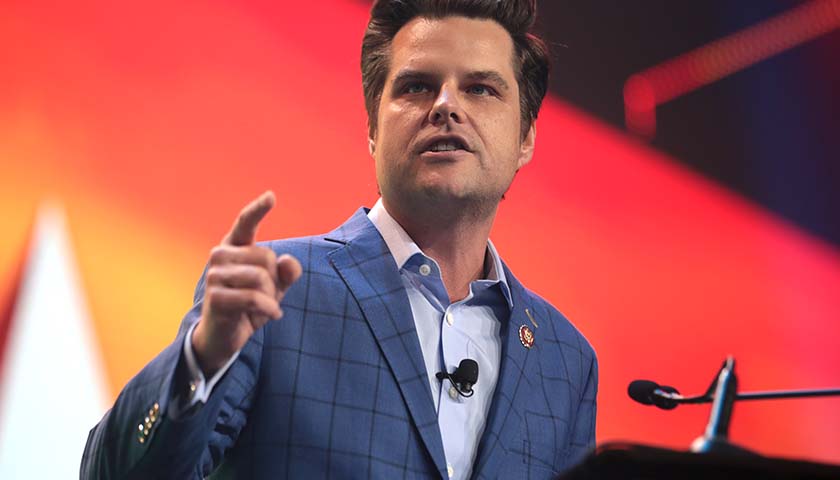by Morgan Sweeney
A Confederate memorial was removed this week from Arlington National Cemetery and could be relocated to the New Market Battlefield State Historical Park in the Shenandoah Valley if Virginia Gov. Glenn Youngkin gets his way.
The park is operated by the Virginia Museum of the Civil War, which is run by the Virginia Military Institute, one of the commonwealth’s 15 public universities and the oldest state-supported military college in the U.S.
The removal of the memorial was instigated by the Naming Commission, a commission established by Congress in 2021 to identify and notify the Department of Defense of military assets that show honor to the Confederacy that they might be renamed or removed.
The memorial’s sculptor, Moses Ezekiel — buried beneath it — was a Virginian and the Military Institute’s first Jewish student. He fought at the Battle of New Market.
After receiving formal notice that the statue would be removed in March, Youngkin wrote to Secretary of Defense Lloyd Austin. Like others who argued that the monument stood for reconciliation more than the Confederate cause, Youngkin urged the secretary to disregard the Naming Commission’s recommendation and leave the monument where it stood.
“I would respectfully ask that you visit the sculpture before deciding its fate. I trust you will see this spot in Arlington as a sacred burial ground reflecting the aspiration to unify a Nation divided,” Youngkin wrote.
The memorial sculpture is undoubtedly a representation of the American South and the Confederacy, with ample Confederate symbolism and two enslaved people among the wartime depictions on its base (one a southern “Mammy” and another following his owner to war). But it’s replete with biblical and ancient symbolism, as well.
The crowning jewel of the monument representing the American South is a classical woman who stands at the top. She holds a laurel wreath, a plow stock and a pruning hook, reinforcing the message of the inscription upon which she stands — a verse from the biblical book of Isaiah: “They shall beat their swords into plough-shares and their spears into pruning hooks.” Seemingly, a message of peace.
However, another prominent inscription in Latin reads, “Vitrix causa diis placuit sed victa Caton.” It translates to, “The victorious cause was pleasing to the gods, but the lost cause to Cato.”
The classical studies department chair at William & Mary, Vassiliki Panoussi, disagrees with interpretations of the memorial as reconciliatory, saying that the Latin lines encapsulate Cato as a martyr for the Roman Republic. Cato governed the ancient city of Utica when Julius Caesar won a battle that decisively ended a near-80-year Roman civil war. An opposer of Caesar and a Stoic, Cato took his own life upon receiving news of the loss.
“Cato became famous for committing suicide in order to avoid being captured by Caesar and succumbing to Caesar’s victory. So that’s where you have this line, ‘The victorious cause was pleasing to the gods’ because Caesar won, but ‘the lost cause’ was pleasing to Cato because he killed himself and martyred himself for that cause,” Panoussi told The Center Square.
This is why the memorial has been seen as glorifying ‘The Lost Cause’ of the Confederacy — since the Union was ultimately victorious and, according to the ancients, “the gods” or “God” commands history, its cause could only be interpreted as “pleasing to God.” But some southerners still proudly and defiantly clung to “the lost cause.”
Though there can be many ways to interpret ancient epics, this explanation, as it pertains to the memorial, seems most likely to Panoussi.
If the Department of Defense ultimately decided to dismantle the memorial, as it has, Youngkin proposed the alternative of New Market Battlefield State Park.
“The governor… believes that the park will provide a fitting backdrop to Ezekiel’s legacy as a legendary sculptor and Virginian, even though he disagrees with the Biden administration’s decision to remove it,” Youngkin’s spokeswoman Macaulay Porter wrote to The Center Square in an email.
The Center Square reached out to the Virginia Military Institute concerning the memorial’s future but did not hear back in time for publication.
The memorial’s granite base and foundation will remain in place to avoid disturbing surrounding graves, according to the cemetery.
– – –
Morgan Sweeney is a staff writer covering Virginia and Maryland for The Center Square. Morgan was an active member of the journalism program as an undergraduate at Hillsdale College and previously freelanced for The Center Square.
Photo “Confederate Monument at Arlington National Cemetery” by Tim1965. CC BY-SA 3.0.




